The Lily light "paved the way for things to come in 3D printing" says Janne Kyttanen
Most Loved: in our next exclusive movie, Janne Kyttanen explains how the the delicate flower-shaped lamp he designed in 2002 demonstrated how 3D printing could be used to create desirable objects for the home.
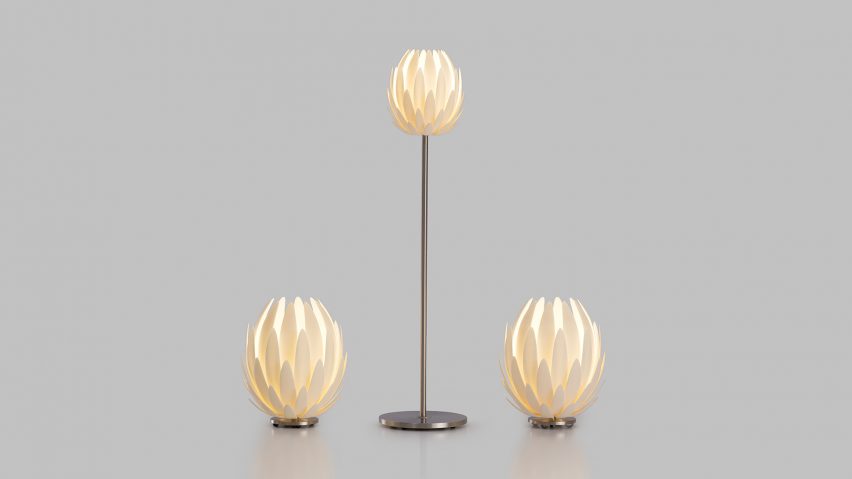
Kyttanen's Lily light, which he designed while part of Amsterdam studio Freedom of Creation in 2002, is a laser-sintered lamp with a form reminiscent of a water lily flower.
The light caused a stir when it was presented at Milan Design Week in 2003, by showing how 3D printing – which was previously considered a prototyping technology – could be used to create consumer products.
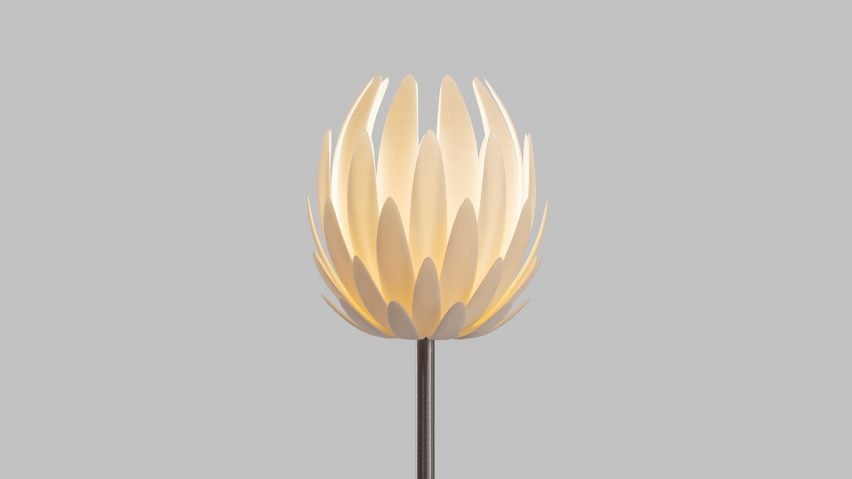
"The Lily light is the first highly commercial 3D-printed lighting product," says Kyttanen in the movie, which was filmed at his studio in Los Angeles.
"It's made of polyamide, a very fine powder used for laser sintering."
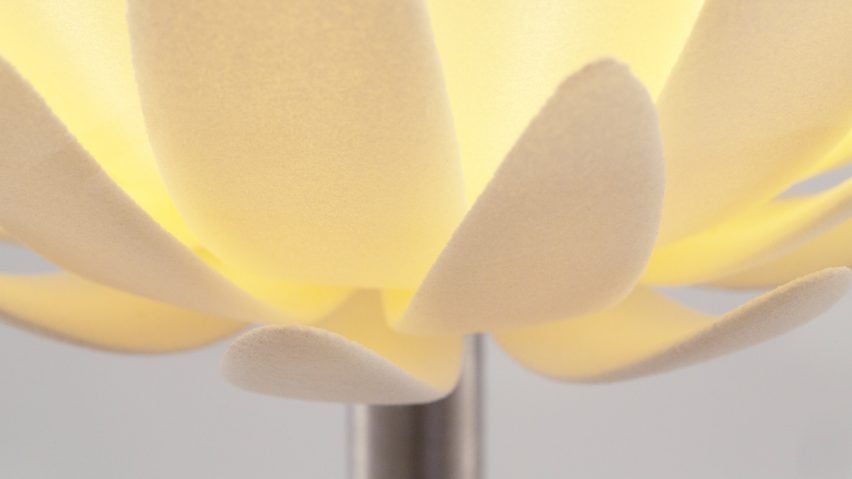
In 2002, 3D printing was much more expensive than it is today. Kyttanen says the key to the success of the product was making it small enough to be affordable.
"One of the challenges when we were designing these products about 20 years ago was how do we make something when everything is still so very expensive," he explains.
"My whole inspiration was to create something very small, but something that would give a big impact into a space."
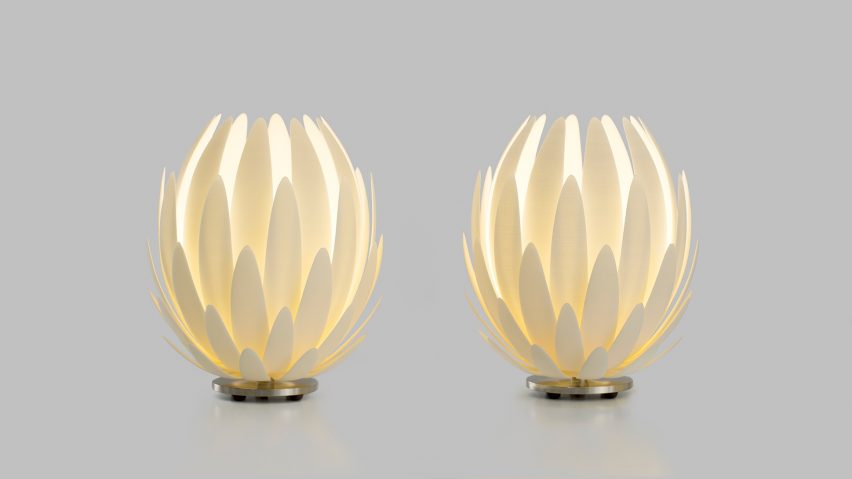
Each Lily light, which is 3D-printed as a single piece, features a series of extremely thin and delicate petals. When the light inside is turned on, the petals glow, revealing the tiny layers of plastic the lamp is composed of.
"When people saw the Lily for the first time, I felt that they were mesmerised by the 3D technology," Kyttanen says. "But the public could also afford it."
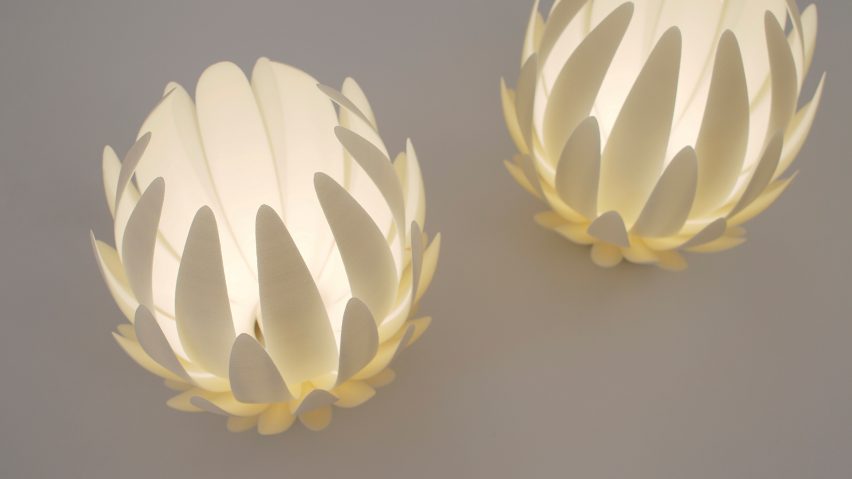
The Lily light – which comes in both table and floor-standing versions – is manufactured to order by Belgian 3D-printing company Materialise.
However, Kyttanen says that his original vision for the light was to produce something that people could eventually 3D print for themselves at home.
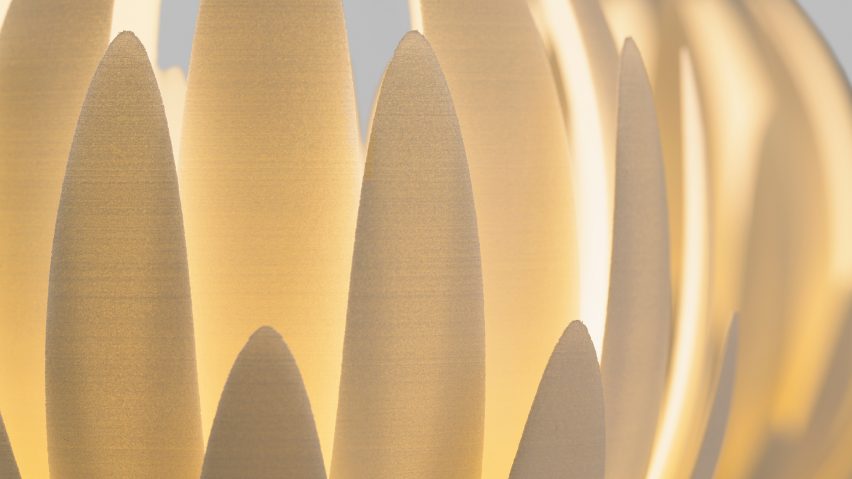
"My point was to create a commercially successful product and pave the way for things to come in 3D printing," he says.
"I wanted to create a future concept for when people could, one day, download 3D data in their living rooms and 3D print them."
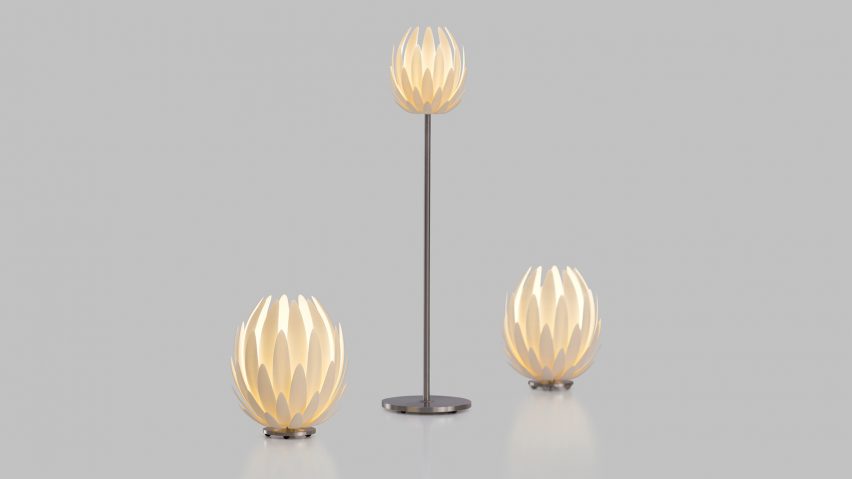
While the Lily light itself is not currently available to be downloaded and printed at home, Kyttanen suggests the proliferation of affordable desktop 3D printers in the years since the light launched show his instincts about the future of 3D printing were right.
Subscribe to Dezeen's YouTube channel for the latest architecture and design movies
"If you fast forward 16 years and look where we are today, [3D printing] is pretty much common place," he says.

Kyttanen's design studio Freedom of Creation was acquired by 3D printing company 3D Systems in 2011, with the Finnish designer becoming creative director of the company.
In 2016 he resigned from that position to found a venture capital fund called What the Future Venture Capital.
This movie was filmed at What the Future's studio in Los Angeles and Dezeen's office in London. The Lily lights for the shoot were provided by Materialise.
Most Loved is a collaboration between Dezeen and car brand MINI celebrating design objects that have found a special place in people's hearts. We are interviewing 16 of the world's leading designers about their most popular and enduring designs.
You can watch all the movies as we publish them on our special Most Loved microsite: www.dezeen.com/mostloved
